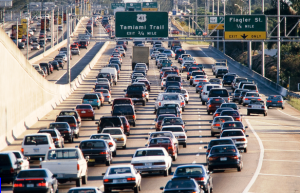
Big Data Helps Drive Transportation Planning

Transportation planners are embracing big data analytics as the nation’s highways become more congested and data science in some instances replaces costly road-construction projects.
The latest example comes from an outfit called Urban Insights Associates, a subsidiary of Cubic Transportation Systems specializing in predictive analytics for the transportation sector. Urban Insights launched a consulting practice in late June designed to help transportation agencies deploy resources for urban transportation networks more efficiently.
“One of the biggest challenges facing the global transportation industry today is the massive amounts of rich data being gathered but underutilized by urban transportation enterprises,” Wade Rosado, director of analytics for Urban Insights, said in a statement announcing the new data practice.
The company said its predictive analytic tools present traffic information as data visualizations to help transportation authorities understand how to maximize network capacity as well as the choices made by travelers. “When we identify stress points in the transportation network, we can help agencies define actions to remedy those situations,” Rosado claimed.
The transportation sector is emerging as a leading source of data and data types generated by vehicle sensors and data collection points like toll booths. Urban Insights maintains that current data management tools and practices are unable to glean insights about transportation networks.
Hence, it is touting a distributed data management and processing platform based on Apache Hadoop. This approach converts “terabytes of disassociated data into strategic and operational assets that will transform entire transportation networks,” claimed Phil Silver, Urban Insights’ director of business development.
In one use case, Urban Insights said San Diego’s Metropolitan Transportation System is using its tools to determine commuter routes as they connect between bus routes and the city’s trolley services. Tracking commuter’s entire route was difficult because tracking systems recorded unlinked travel segments.
Urban Insights claims it solved the problem of unlinked trips by fusing data from five independent sources, applying analytic models and then leveraging the information to identify ways to improve and public transportation services.
The consulting firm said San Diego transportation planners could use these insights to allocate resources consistent with how riders actually use city services.
Similar efforts are underway on the U.S. east coast where the I-95 Corridor Coalition is attempting to leverage data analytics to reduce congestion on one of the nation’s busiest interstate corridors. The goal of the effort is to create a “traffic data marketplace” that would among other things monitor traffic and weather conditions to optimize I-95 traffic capacity.
Again, transportation planners are attempting to use data analytics to allocate limited resources where they can boost the capacity of clogged transportation networks.
Meanwhile, Urban Insights says it is relying on both process improvement and advanced analytics to boost the operating efficiency of transportation networks at a time when municipal operating budgets are being squeezed.
Related items:
What it Takes to Deliver Real-Time Traffic Info


























